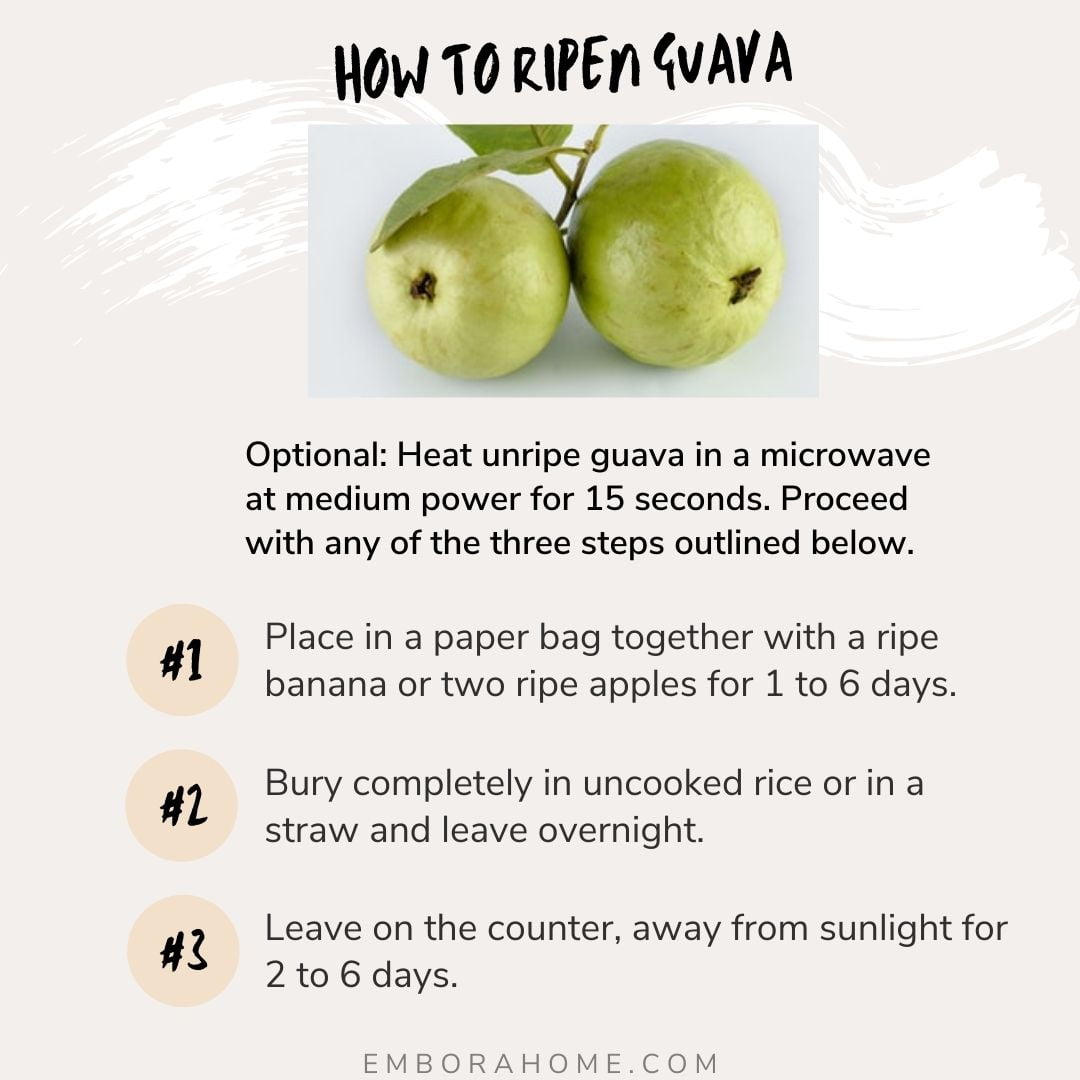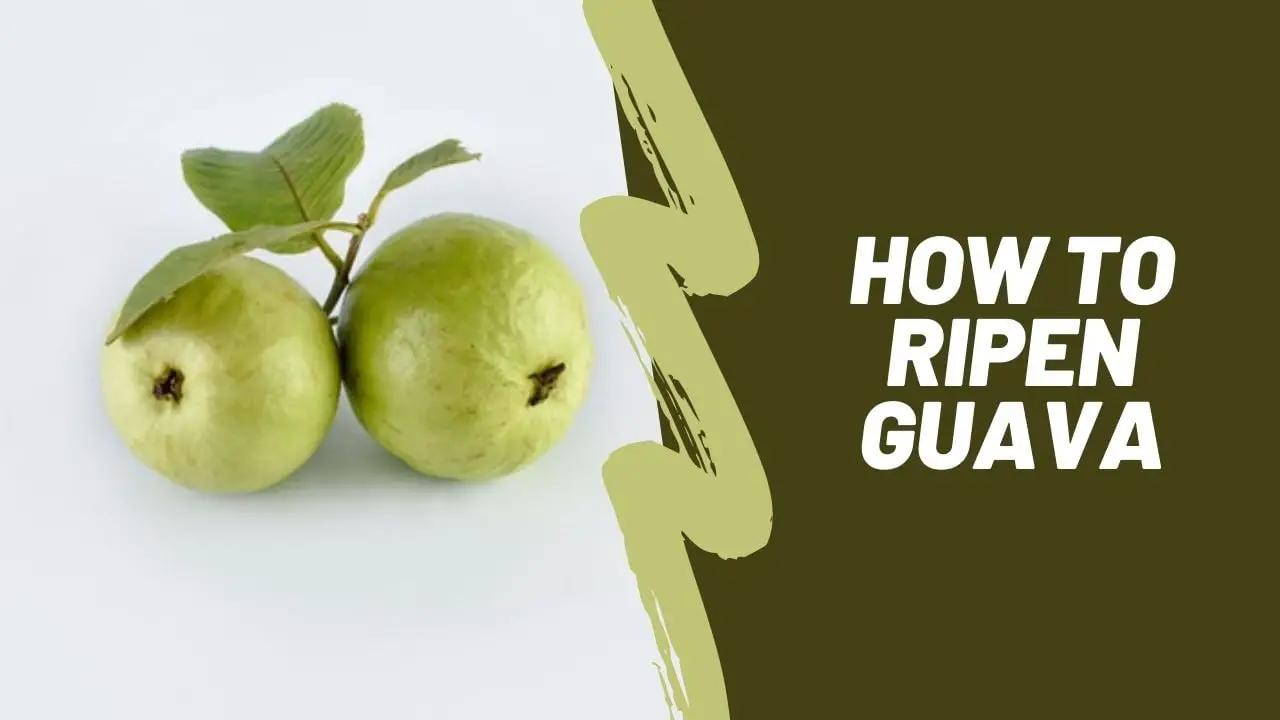Only a few things are more annoying than sitting into a cramped sofa and lamenting the lack of patience that made you harvest your guavas unripe! Remind yourself that you did so after waiting 2 to 3 years for your guava shrubs to start fruiting and it becomes even more heart breaking!
But unripe guavas aren’t exactly the end of the world. In fact, they are quite far from that! Guavas always continue to ripen after they’re picked up from the trees at their prime size, and given the perfect medium, the can impressively rival the floral and musty notes produced by individuals that ripen naturally on the trees. Interestingly, that’s how they are picked up from acreages and coated with wax for commercial distribution — “at their just beginning to ripen states”.
There are handful of ways you can easily make garden or grocery guavas turn ripe much faster. In this article, we take a look at three of the most impressive ways can do so, and then conclude with expert tips on how to properly preserve guavas for short and long term usage.
Ah! Lest i forget, there’s a quick card at the bottom of the page explaining all the noise we’re about to make in this article. You can download and save time when you’re short of it, but i highly recommend reading this article from start to finish!
How to ripen guava
At home
If you ever bring back a rock hard guava from the fruit stores or pluck them raw from the backyard garden, don’t despair, there are couple of ways you can easily turn them ripe at home, ready for your cobbler or salad dressing. Here’s how.
1) Keep them on the counter at room temperature:
One of the easiest way to ripen guava fruits is to let them sit on the counter, away from the sun, for 2 to 6 days, or until they start to ripen.
You want to make sure the house is free from fruit fly infestation, or, that the guavas never sit on the counter for too long that they begin to turn overripe – becoming extremely scenty with darkly colored rinds.
Fruit flies love the scent and taste of overripe fruits and will readily march into the house to lay their eggs on them. If you give them the medium to reproduce through your attempts to ripen guavas, not only would you be annoyed by the fact that you wasted time ripening guavas for fruit fly larvae to pounce on, you’ll also be dealing with a fruit fly infestation which is another problem far worse than loosing guavas!
2) Bury them in raw rice:
What makes fruits ripen is the ethylene gas they expel from within, and therefore finding a way to concentrating this gas around the fruits can make them ripen at a much faster pace.
Uncooked rice or straw in general are very good mediums for trapping ethylene gas. So, for your green guavas with semi-sturdy rinds, wash them clean under a running tap (so you may perhaps rid them of any anti-ripening waxy coat and dirt), and dunk them deep into raw rice or grain straw overnight, or for two nights – making sure to consistently check on a daily basis to avoid running into a mushy mess. Guavas do indeed, transition from green to ripen berries in as little as a flash. So all eyes on them.
Seal them in paper bags:
As an alternative to the rice and straw method from above, you can also use a paper bag which is another excellent medium for trapping “ripe-inducing” ethylene gas too.
With paper bags, you can make the magic happen much faster by sealing the guavas together with already ripe fruits such as apples and bananas that give off a much higher percentage of the gas. This combo of guava plus any of the two fruits (usually one ripe banana or two ripe apples) will speed up the ripening process in as little as a one day or two!
#Speedy tip:
If you have a microwave oven, you can additionally speed up the ripening process from the three methods above. Simply heat up the unripe fruits in a microwave under medium power for 15 seconds and then proceed to ripen them on the counter, inside raw rice or grain straw, or in a brown paper bag with two ripe apples or one ripe banana fruit. This works faster because the heat from the microwave kickstart the ripening process instantly.
On the trees
Ripening guavas on trees goes without saying that the fruits could easily perish in as little as a whoosh or end up serving other hungry lifeforms other than yourself. Because guavas quickly go from rock hard to mushy, the probability of you noticing when the effect happen is quite low, but that of fruit flies, guava moths or soaring birds is definitely high!
That’s why it’s advisable that you always stay ahead of your competition, by plucking guavas 90 to 150 days after flowering (which would require that you closely monitor the shrubs from day-one), or when they just start to ripen. You can easily tell from the change in colors, persistent musty smell, and development of a rind that easily gives to pressure. You can harvest guavas using a scissors or by hand.
When you harvest them in this semi-ripen state — which are still perfectly edible, you can always ripen them a bit more and faster using the tricks mentioned above, or store them unripe if you have no need for them at that moment. Learn how to below.
If you’re the type that still doesn’t mind sharing your guavas with birds and fruit flies — **nodding yes?** it’s obvious you’re a home gardener, then you can always allow the fruits to fully ripen on the trees – they’ll turn into darker colors of their semi-ripened states, gush out the smell of musty aromatics even more, and develop rinds that are more lumpier than their semi-ripened states, like a fully ripe avocado. And most importantly, they’ll fall off the trees when they attain their prime quality – full of natural flavor. You can always pick ripe fruits prior to their fall to avoid bruise which significantly reduces their shell life.
Note:
- Guavas having black or brown spots all over them are likely to have been infested by insects. Check by slicing them into halves and discard when you notice tiny baby larvae moving and bumping each other from within.
- Guavas having bruises perish much faster than fresher ones, upon harvest, use them first before going for the others.
How to store guavas
Unripe to semi-ripe guavas: Unripe guavas can be stored in the refrigerator under tight plastic or paper bag wrapper for no longer than a week, because they still ripen under than environment. For long term storage, cut into slices, or leave them as they are, wrap in plastic or paper wrap and store in the freezer for up to 8 months.
Ripe guavas: Ripe guavas are highly perishable. The maximum you can keep them in the refrigerator, in a plastic or paper bag, sliced or unsliced is 2 to 4 days. For long term use, slice them into wedges or thin oval shapes resembling plantains, dip in a syrup mixture containing 2 parts sugar and 1 part water and freeze for up to 8 months.
Quick Infographic on how to ripen guava (you can download):


